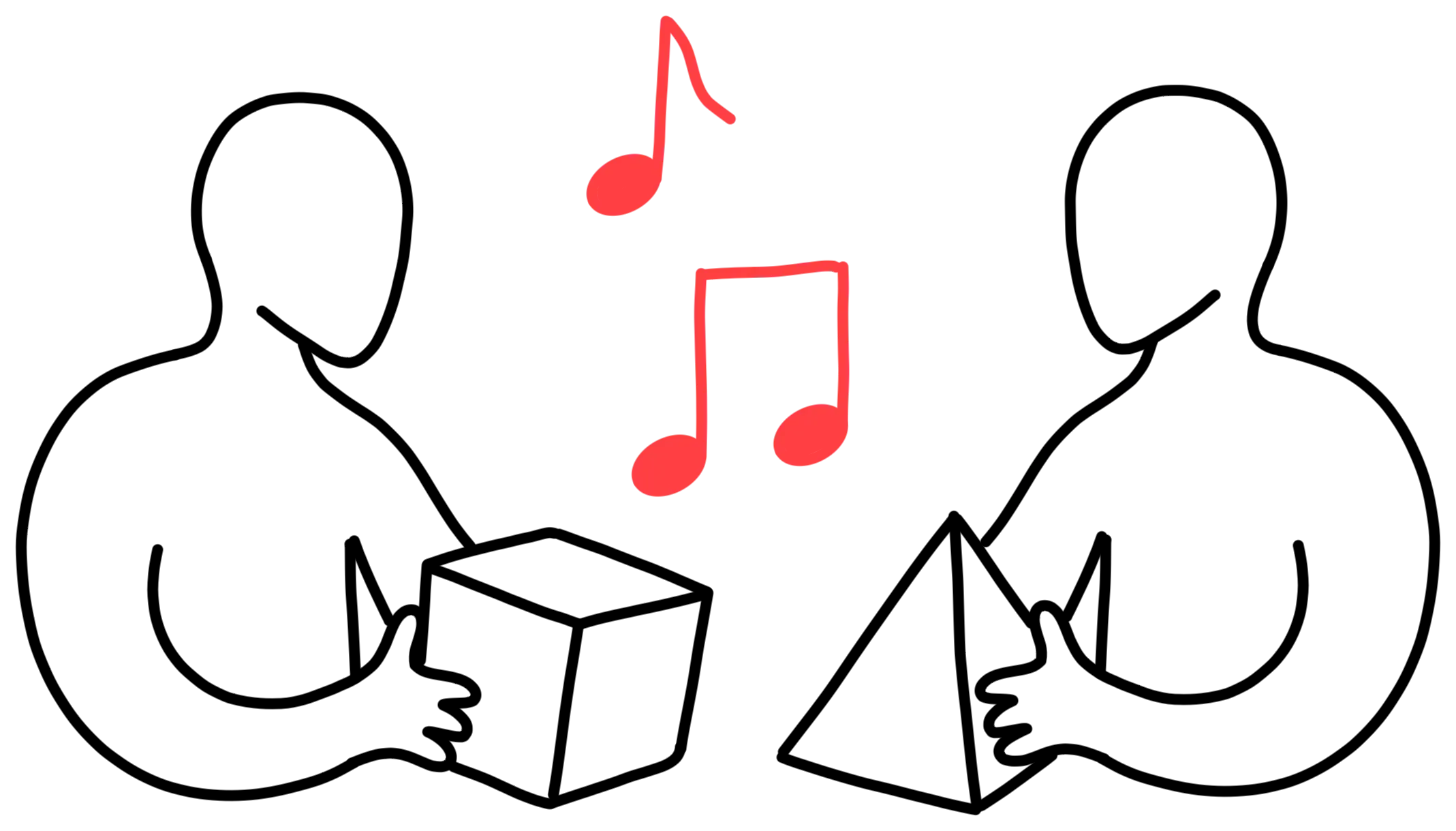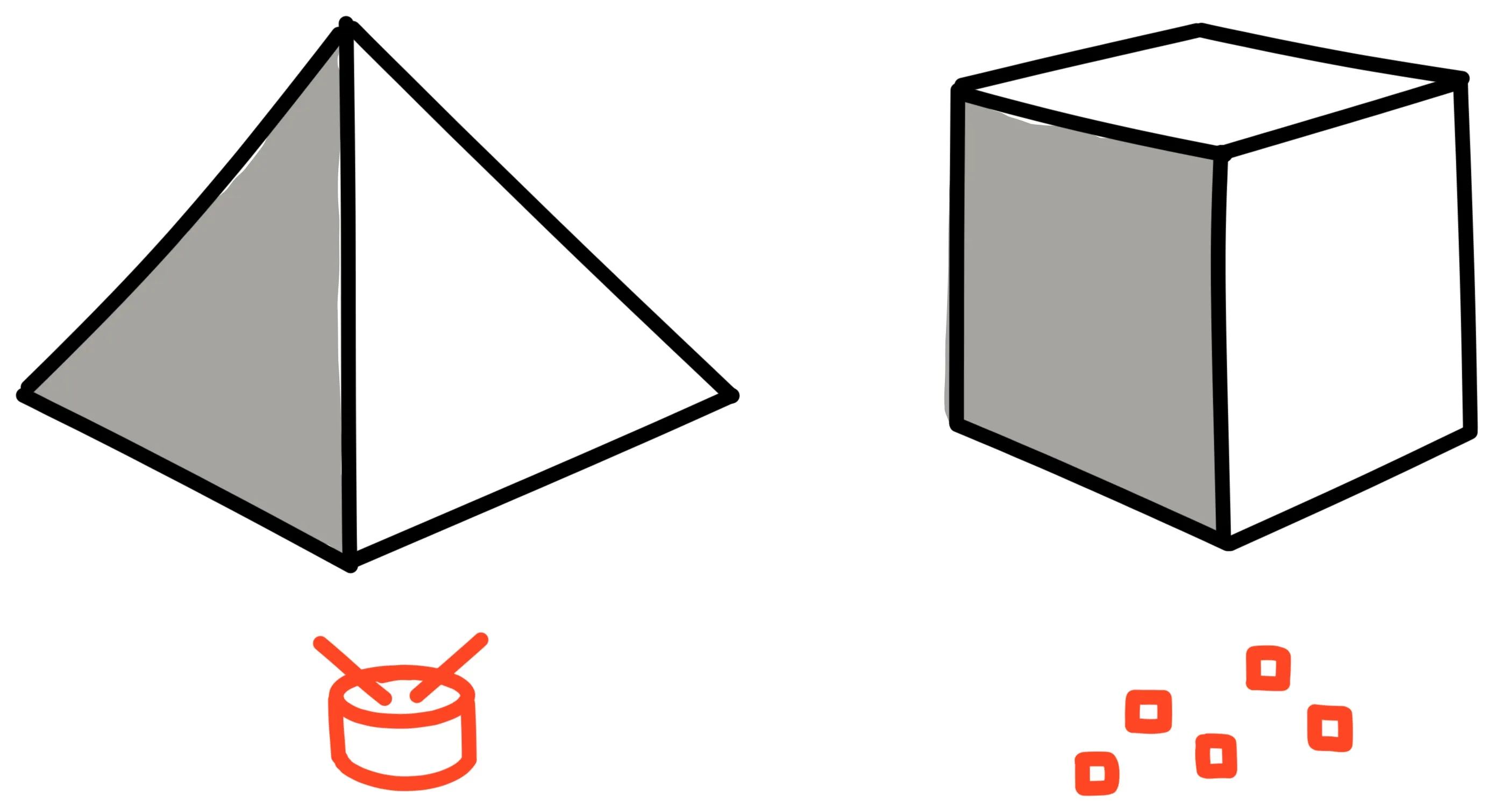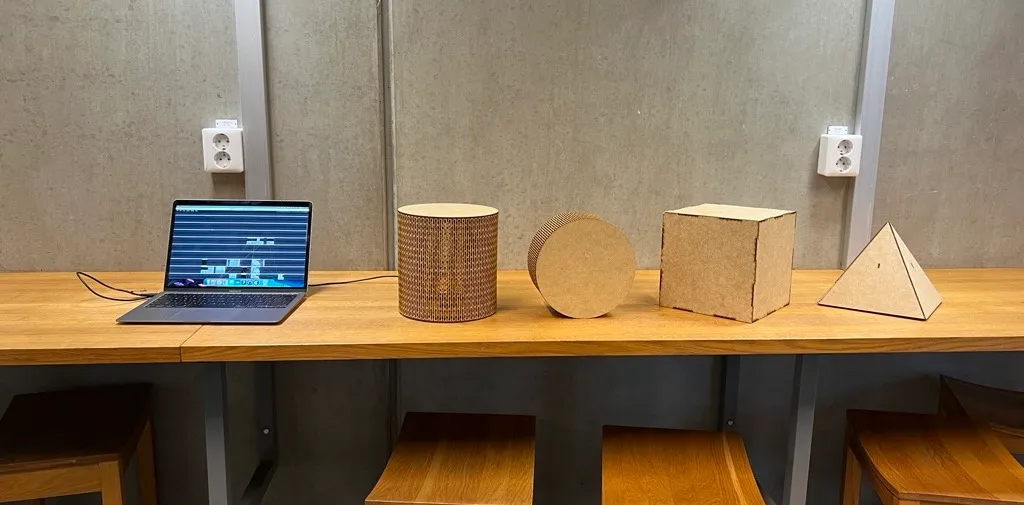
Shaping Sound
Music is something that many enjoy together, but mainly as listeneres. Only some have the experience and skills required to write or play music. This project explores a way to make collaborative instruments that makes it easy for novice musicians to make music together in real time
Year
2023
Duration
5 weeks
Type
Group Project
Responsibilites
instrument behaviour design, user testing, project management
Collaborators
Andreas Artman, Jakub Krnáč, Nynke de Bakker
Tools
Arduino, VCV Rack, laser cutting, Puck.js, JavaScript
Keywords
haptics, GUIs, interactivity
Outcome
The outcome of the project is a working prototype of a system that allows up to four people to collaborate in music making. The system consists of a set of three-dimensional objects that can be moved and rotated to control the sound of a synthesizer. The objects are connected to a computer running VCV Rack, which is used to generate the sound.
A network of shapes
The network is composed of shapes that serve two purposes: two shapes work as instruments, the other two function as effects that change various attributes of the composition.
Instruments
The pyramid controls the drums. The user triggers a series of looping drum patterns by flipping the pyramid to each of its sides. The cube controls the synth. In this case, when the user moves the cube a "one-time" pattern is triggered. This means that the user controlling the cube must continuously flip the cube to other sides to play the synth.

The pyramid and the cube control the drums and the synth respectively.
Effects
The effects are controlled by two cylinders. The taller cylinder lays on the curved side and can be rolled back and forth to control how bright the overall composition sounds. Under the hood, this shape is controlling a low-pass filter. The shorter cylinder can be used as a knob that controls the tempo of the music and the density of the background track.

The tall cylinder controls the brightness of the composition, while the short cylinder controls the tempo and density of the background track.
Hardware setup
The communication between the shapes and the computer is handled by an Arduino Nano 33 BLE Rev2 and four Puck.js microcontrollers. Each Puck.js is configured to advertise accelerometer data through BLE. The BLE advertisements are picked up by an Arduino board, which has the tasks of converting the BLE advertisements into MIDI signals. The MIDI signals are then read by VCV Rack, an analog synth emulator that is running on the laptop.

The hardware setup consists of a laptop running VCV Rack and four three-dimensional shapes made of wood that communicate with BLE to an Arduino board.